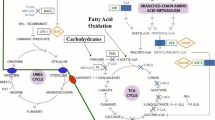Abstract
Objective
To evaluate the prevalence and the mechanism of hyperchloremic acidosis component (HC1A) during lactic acidosis secondary to grand mal seizures.
Design
Retrospective study.
Setting
Medical intensive care unit in a university hospital.
Patients
35 patients admitted for grand mal seizures with lactic acidosis (pH<7.35, TCO2 <20 mmol/l and PaCO2 <8 kPa).
Measurements
HC1A was defined by the ratio: excess anion gap/HCO3 deficit (ΔAG/ΔTCO2) <0.8. A difference in the distribution space of protons and their accompanying anion, i.e., a displacement of chloride from cells by the entering lactate, was evaluated by the ratio natremia/chloremia (Na+/Cl−).
Results
Immediately after seizures, a profound lactic acidosis was observed (pH=7.22±0.17 (mean±SD), AG: 23.8±7.1 mmol/l, TCO2=14.5±5.3 mmol/l, lactate: 14.6±6.9 mmol/. HC1A was present on admission in 11 patients (31.5%). Its prevalance increased to 73% after recovery. ΔAG/ΔTCO2 ratios were unrelated to creatinine, level and PaCO2, but dependent on the ratio Na+/Cl− (r=0.803;p<0.001, ΔAG/ΔTCO2=6.4 X (Na+/Cl−)−7.9). These data demonstrate that HC1A is not a respiratory or renal phenomenon and suggest differences in the distribution spaces of hydrogen ions and their accompanying anions.
Conclusion
HC1A component may be associated with lactic acidosis in grand mal seizures and appears to be secondary to a lactate antiport. This phenomenon could be an immediate physiological response to a sudden metabolic acidosis.
Similar content being viewed by others
References
Adrogue HJ, Wilson H, Boyd A et al (1982) Plasma acid-base patterns in diabetic ketoacidosis. N Engl J Med 307:1603–1610
Oh MS, Carroll HJ, Goldstein DA, Fein IA (1978) Hyperchloremic acidosis during the recovery phase of diabetic ketosis. Ann Intern Med 89:925–927
Brivet F, Bernardin M, Dormont J (1991) Acidose hyperchlorémique au cours des acidoses métaboliques à trou anionique augmenté. Comparaison avec les acidocétoses diabétiques. Presse Méd 20:413–417
Orringer CE, Eustace JC, Wunsch CD, Gardner LB (1977) Natural history of lactic acidosis after grand-mal seizures. A model for the study of anion-gap acidosis not associated with hyperkalemia. N Engl J Med 297:796–799
Madias NE (1986). Lactic acidosis. Kidney Int 29:752–774
Le Gall JR, Loirat Ph, Alperovitch A et al (1984) A simplified acute physiology score for ICU patients. Crit Care Med 12:975–977
Oh MS, Carroll HJ (1977) The anion gap. N Engl J Med 297:814–817
Adrogue HJ, Eknoyan G, Suki WK (1984) Diabetic ketoacidosis: role of the kidney in the acid base homeostasis re-evaluated. Kidney Int 25:591–598
Dixon WJ, Bronn MB, Engelmann L et al (1981) BMDP statistical software 1981. University of California Press, Berkeley, Calif
Naylor JM, Kronfeld DS, Freeman DE, Richardson D (1984) Hepatic and extrahepatic lactate metabolism in sheep: effects of lactate loading and pH. Am J Physiol 247:E747–755
Yudkin J, Cohen RD (1976) The effect of acidosis on lactate removal by the perfused rat kidney. Clin Sci Mol Med 50:185–194
Pitts RF (1974) Physiology of the kidney and body fluids, 3rd edn. Year Book Medical Publishers, 1974, Chicago, p 212
Cohen RD, Woods HF (1983) Lactic acidosis revisited. Diabetes 32:181–191
Llyod MH, Iles RA, Walton B et al (1974) Effects of phenformin on gluconeogenesis from lactate and intracellular pH in the isolated perfused guinea pig liver. Diabetes 24:618–624
Hindman BJ (1990) Sodium bicarbonate in the treatment of subtypes of acute lactic acidosis: physiologic considerations. Anesthesiology 72:1064–1076
Author information
Authors and Affiliations
Rights and permissions
About this article
Cite this article
Brivet, F., Bernardin, M., Cherin, P. et al. Hyperchloremic acidosis during grand mal seizure lactic acidosis. Intensive Care Med 20, 27–31 (1994). https://doi.org/10.1007/BF02425050
Received:
Accepted:
Issue Date:
DOI: https://doi.org/10.1007/BF02425050




